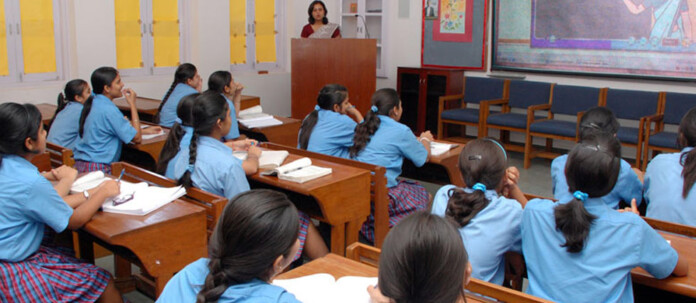Awareness about the environment and climate should start in the classrooms. It is good to hear about the growing interest in imagining and designing eco-friendly classrooms. As a furniture designer dedicated to fostering safe and sustainable learning environments, I advocate for moving away from conventional plastic furniture in favor of child-friendly materials that prioritize health and sustainability.
Plastic furniture, prevalent in many educational settings, harbors hidden dangers due to its chemical composition. Harmful substances such as carcinogens, neurotoxins, and endocrine disruptors can adversely affect children’s health, leading to respiratory issues, developmental delays, and cognitive impairments.
In contrast, FSC-certified birch plywood presents a safer alternative, revolutionizing green classrooms by creating healthier, more engaging, and environmentally responsible learning spaces. Naturally free from toxic chemicals, responsibly sourced wood supports sustainable forestry practices. FSC certification guarantees that the wood is harvested from forests managed to uphold environmental, social, and economic values.
Schools such as Kumarans School (Bangalore), Holi Sai International School (Coimbatore), Amra School (Hyderabad), and Podar International (Mumbai) have already adopted this sustainable approach, integrating X&Y’s eco-friendly furniture into their classrooms.
Beyond safety, birch plywood’s aesthetic qualities contribute to an inviting classroom atmosphere, enhancing student motivation and engagement. The tactile nature of wood fosters a calming, comfortable environment, reinforcing positive learning experiences. Additionally, X&Y’s FSC-certified birch plywood chairs are competitively priced, with a single chair costing approximately ₹1,500, ensuring affordability while prioritizing sustainability.
The Role of Sustainability in Modern Classrooms
As schools increasingly adopt green policies, sustainability is being woven into curriculums through initiatives such as recycling, composting, and environmental education. Switching to sustainable furniture plays a vital role in this transition, serving as a tangible demonstration of a school’s commitment to environmental responsibility. Investing in eco-friendly furniture helps institutions model responsible practices, fostering a culture of sustainability among students.
When students witness their schools actively participating in sustainability efforts, they internalize these values, developing into environmentally conscious individuals equipped to tackle future climate challenges. Schools that embrace sustainability also stand out as progressive institutions committed to holistic student development.
Ergonomics and Comfort: Designed for Young Learners
Well-designed wooden furniture significantly enhances posture, focus, and overall well-being for young learners. Ergonomically crafted chairs and tables promote proper spinal alignment, reducing the risk of musculoskeletal issues. Inspired by Montessori principles, X&Y’s minimalist designs minimize distractions and foster concentration. Features such as rounded edges and non-toxic finishes ensure safety and comfort, creating an optimal learning environment.
Research suggests that comfortable learning spaces improve concentration, retention, and academic performance. By prioritizing ergonomics, schools can positively impact student outcomes while reinforcing a sense of well-being.
The Economic Argument for Sustainable Furniture
While the initial investment in sustainable furniture may be higher than conventional alternatives, its long-term benefits far outweigh the costs. Durable and built to last, sustainable furniture reduces the need for frequent replacements, allowing schools to allocate budgets more effectively. Moreover, a healthier learning environment contributes to improved student attendance, engagement, and academic achievement, further reinforcing the value of eco-friendly investments.
Community Engagement and Awareness
The transition to eco-friendly classrooms fosters community engagement. Schools can involve parents, educators, and local organizations in sustainability efforts, organizing tree-planting drives, recycling initiatives, and workshops on sustainable living. By integrating sustainability into everyday school life, institutions create a ripple effect, inspiring students and their families to adopt environmentally responsible practices beyond the classroom.
Parting Thoughts
The shift towards eco-friendly education spaces is not merely a trend; it is a necessary evolution prioritizing the health of both students and the planet. Embracing sustainable furniture solutions is key to creating classrooms that inspire learning while nurturing a deep respect for the environment.
As we move forward, educators, administrators, and policymakers must recognize the importance of sustainability in education. By investing in eco-friendly furniture and creating green classrooms, we are not only enhancing the learning experience but also equipping the next generation with the values and skills needed to navigate an increasingly complex world.










